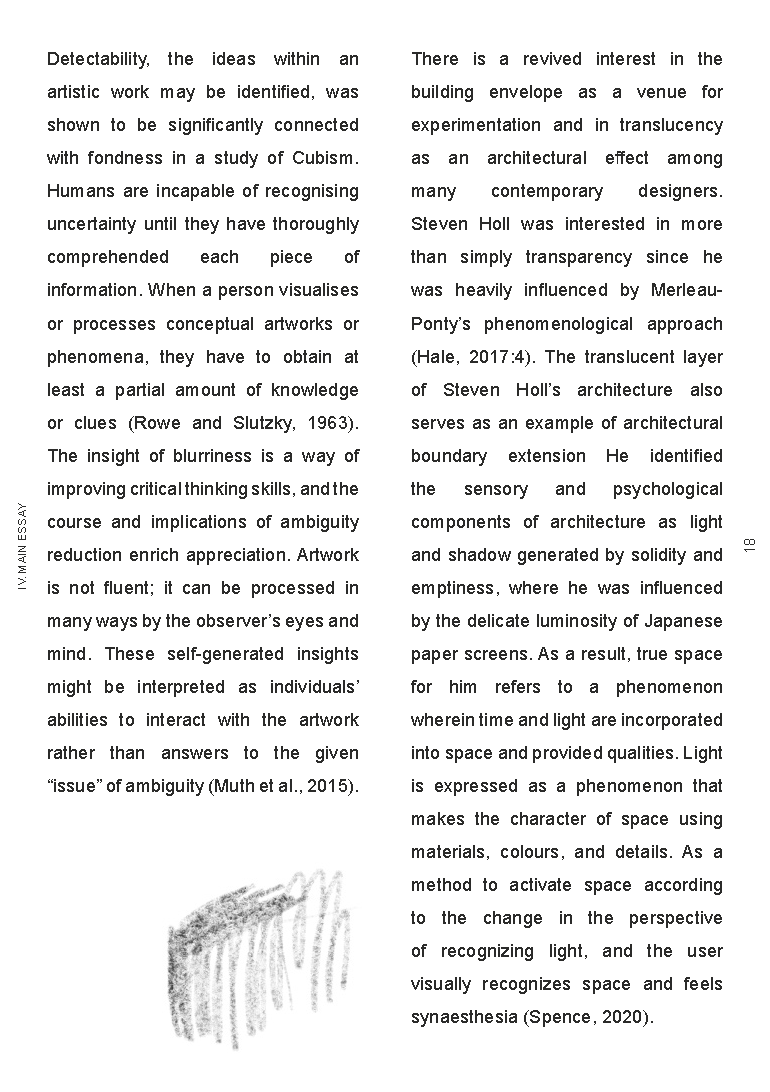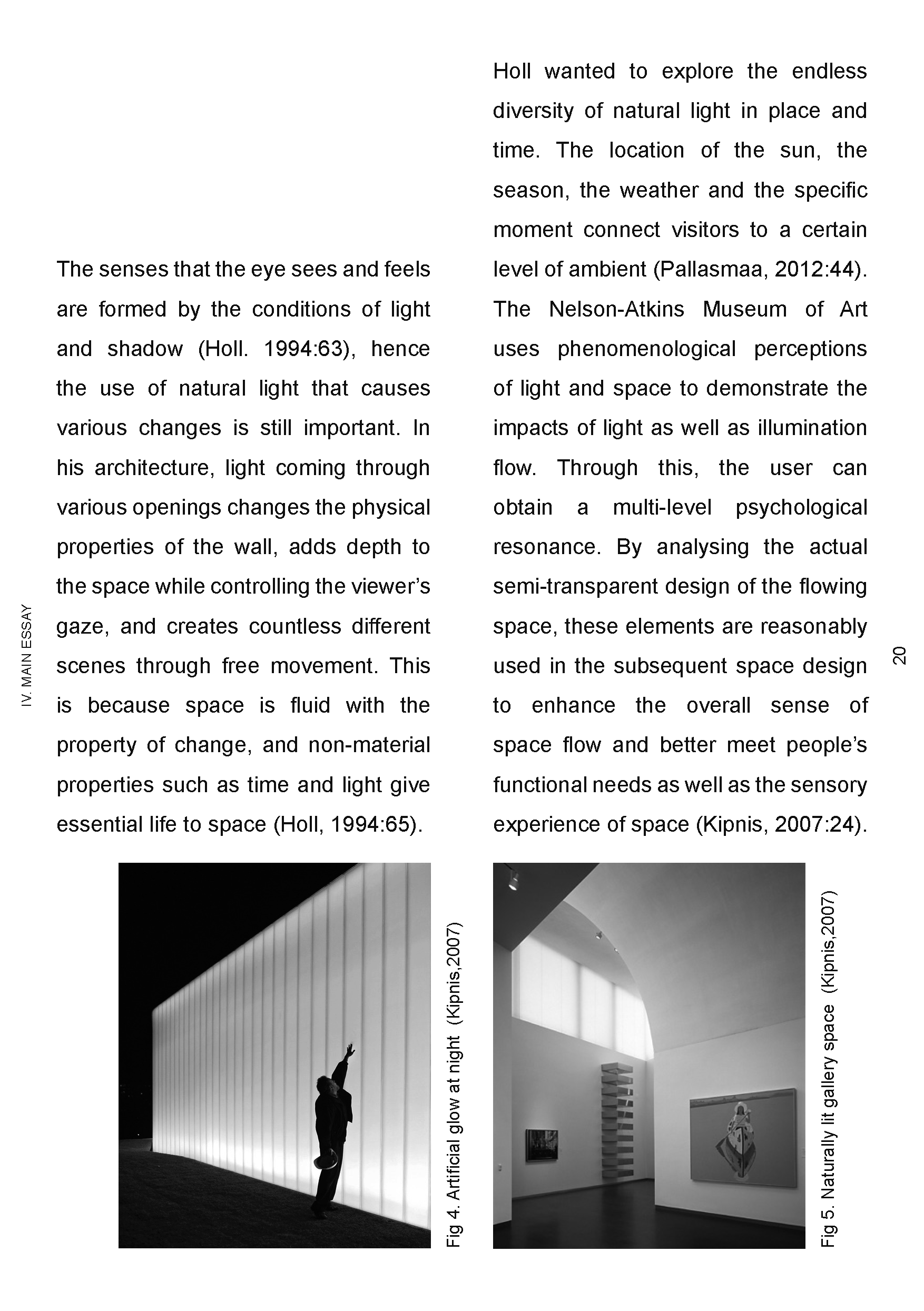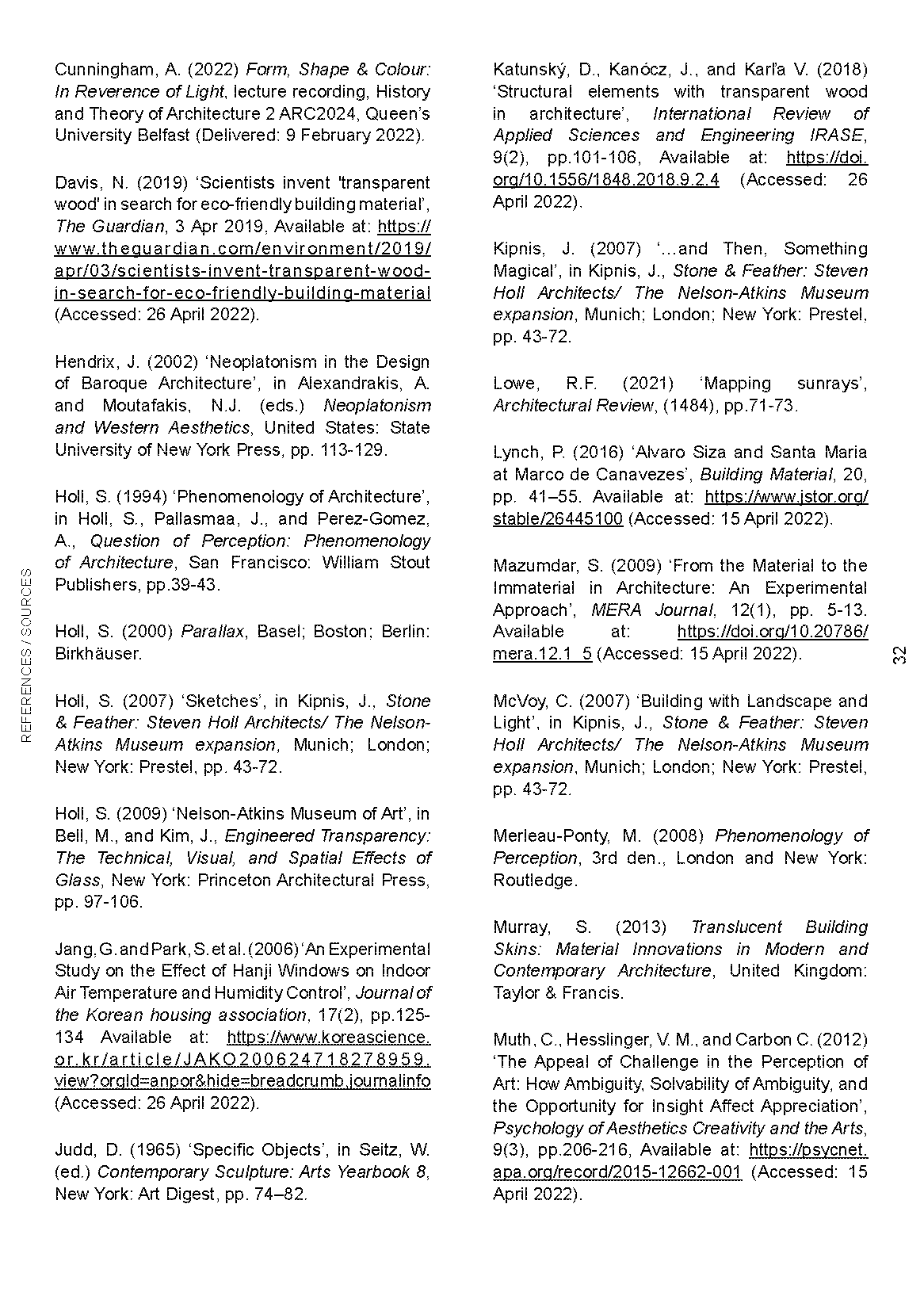+ zine [physical]



















Spirit of Ambiguity
architecture as instrument: the translucent skins generate phenomenological expereicne
2022
phenomenology
/ essay
Light becomes an instrument, amplifying experimental phenomena and ambiguous characteristics of space itself, fostering a stronger bond between individuals and their environment. The perception of mystery is generated by the glowing light coming from the poetic translucent façade. It explores the notion that translucency of the building skin has a solid relationship in terms of enhancing the user experience, observed through phenomenology. It has analysed phenomenology and how it relates to the psychological aspects of ambiguity beyond objects. Merleau-Ponty defined transparency as the degree to which anything is cognitive or emotional, physical, symbolic, visible, or perceptive.
Architectural understandings are gained not just through visual processing, but also through unconsciously received experiences with humankind and the rest of nature. The crossing viewpoints enable humankind to understand the essence of ambiguousness, as in Merleau-Ponty’s phenomenological approach and Rowe and Slutzky’s theory of how people perceive blurred or abstract art. The “phenomenal” in architecture was re-examined thoroughly by Steven Holl and Juhani Pallasma. The architecture of phenomenology is spiritual and conceptual rather than physical or visible. The ambiguous light being used convey the environment to individuals and impact how they view it might reflect the complexity of phenomenological experience. Beyond the practical body, architectural vision is linked to a psychological approach to human existence and the mysterious inner value and spirit.
It attempted to examine various phenomenal light expression methods and characteristics embodied in Steven Holl’s Nelson-Atkins Museum of Art and Co-library projects, focusing on light as a subject that reveals the phenomenon of space, away from the conceptual framework of light as an element in the existing phenomenological architecture.
Through this, the concept and meaning of phenomenal light were established, and the use and expression method of light for the realisation of atmospheric space and its characteristics were derived. It aims to reveal the psychological effect of translucent skin, which enhances the phenomenological and spiritual experience of its users.
The study contributes to understanding how people perceive light and space from a phenomenological perspective. The ambiguity and blurriness of an object’s thinking and perception expand the boundaries of thought and perception. It enables people to appreciate brilliance beyond the material world and to broaden their perceptions of specific phenomena. The glowing light that penetrates the translucent facade adds richness to the architectural space and performs as an instrument to have a sensory experience. Furthermore, research into the next-generation material in place of glass or plastic is necessary for a sustainable future and to create new spatial experiences